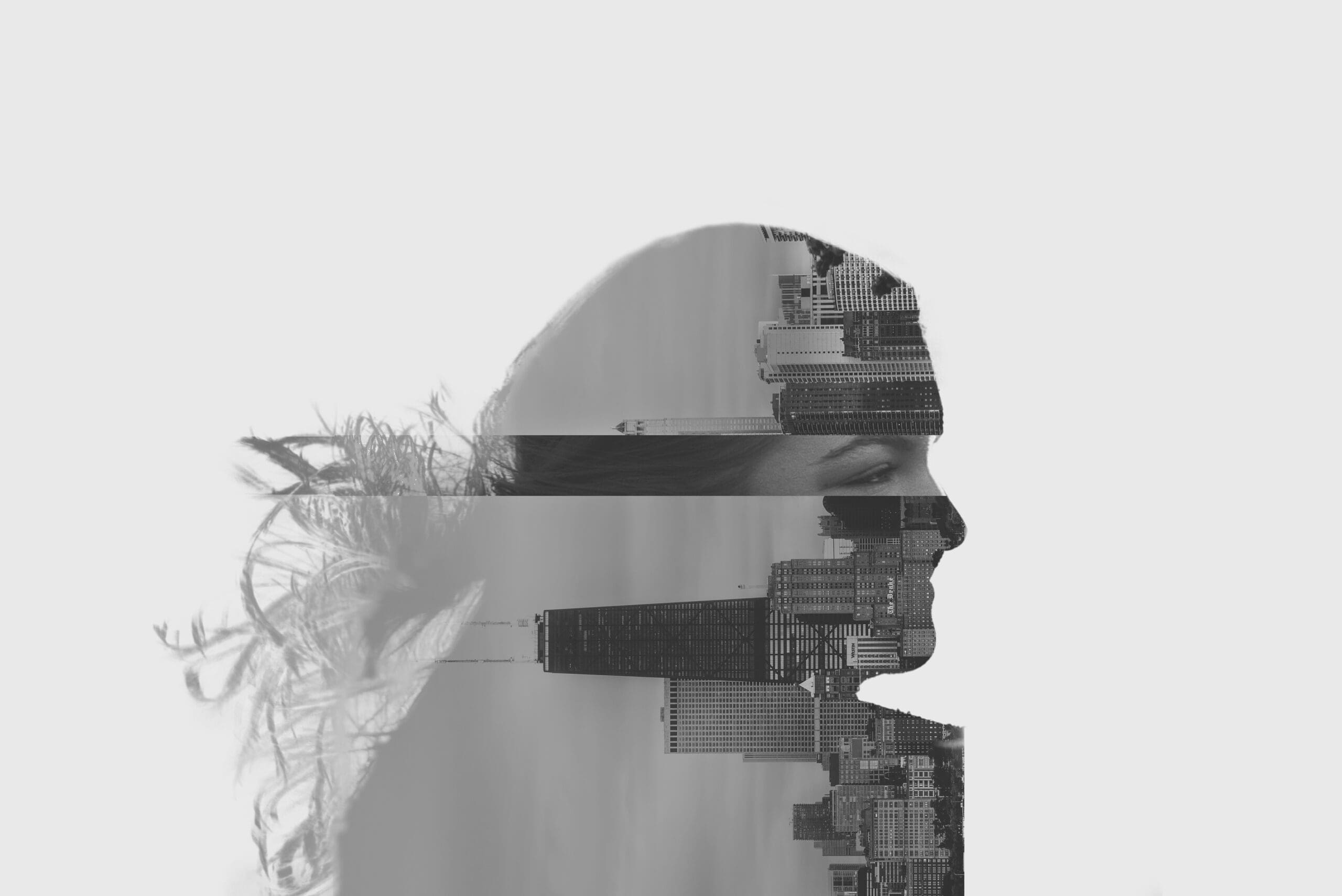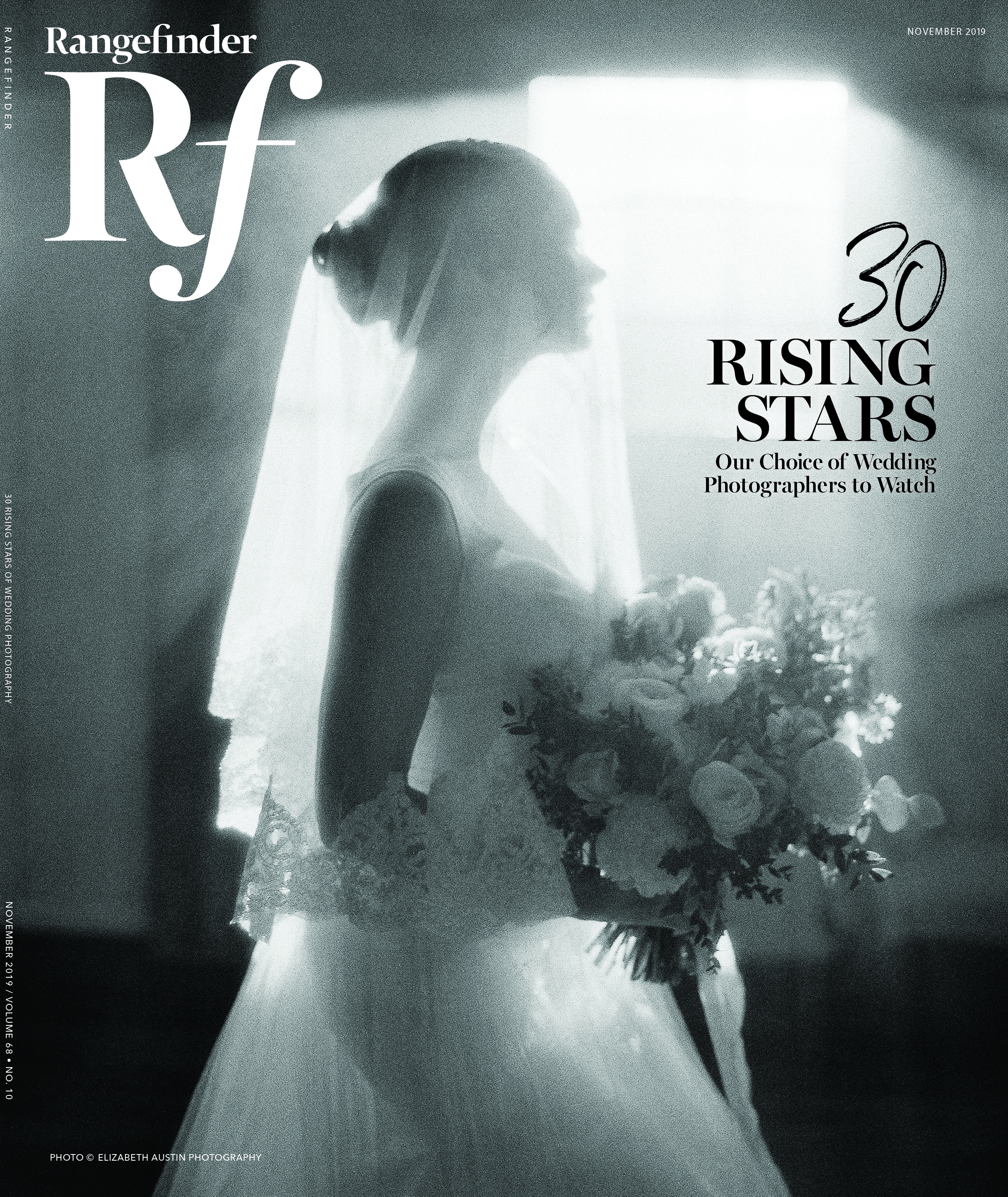News + Features
Photos of the Week January 6: Double Exposure
January 6, 2025
The double exposure merges two photos into one, but the technique can bring more than just images together, creating a blend of ideas, perspectives, or concepts. This week, we’re featuring five stunning double exposure images as Photos of the Week. Find inspiration in these shots by Cat Ekkelboom-White, Lucy Schultz, Lindie Wilton, Kristen Hazelton, and Will Khoury.
Cat Ekkelboom-White, Wild Connections Photography

Cat Ekkelboom-White of Wild Connections Photography had just taken this couple’s photographs as they said their vows at sunrise when she decided to try a double exposure as the two were taking in the view. Ekkelboom-White explained that she shot this double exposure in camera using her Fujifilm X-T5 and XF 16-55mm f2.8 lens.
“Just play around and have fun with double exposures,” she suggests. “Sometimes they work, sometimes they don’t. Practice exposing and testing what makes the best compositions. Make sure you test your settings before going into the shoot, and give yourself time to be creative. Explain to your clients that you want to try something, and that sometimes it can take a few attempts, so you’ll need them to be patient. Most clients are more than happy (unless they are on a tight timeline) and love seeing the results.”
Lucy Schultz, Lucy Schultz Photography

Lucy Schultz of Lucy Schultz Photography was inspired to take a silhouette during Ruth and Ryan’s elopement. But, she wanted to include the California Redwoods they were surrounded by in the shot as well. To do so, after taking the first silhouette exposure, she turned the camera upside down and used the in-camera double exposure mode and live view to properly align the second shot of the tree with the first. She captured the shot with the Canon R6 and Canon 70-200mm f2.8 lens.
“Double exposures are a great way to play,” she said. “My advice is to start with a silhouette photo early in your session, and go back to it later when your creativity is flowing. Use live view to see where your second image will line up and bleed through the first image’s dark areas.”
Lindie Wilton

For photographer Lindie Wilton, double exposure is a tool that allowed her to create an image representing the interconnectedness with nature that all people share. She used Adobe Photoshop to blend the two separate exposures together in post.
“Experiment extensively,” she suggests. “Begin with an image that features striking contrasts between shadows and highlights. Delve into images or scenes with diverse textures, and don’t hesitate to adjust your overlay settings during post-production.”
Kristen Hazelton, Kristen Hazelton Photography

During this senior session, Kristen Hazelton of Kristen Hazelton Photography wanted to create an image that represented her client’s time in Chicago, with a feeling of both looking back at the past and forward to the future. That inspired this double exposure, captured on a windy day in the windy city and merged later in Photoshop. Hazelton captured the image with the Nikon Z5 and Nikkor 24-70mm f2.8 lens.
“My advice with double exposures is just to give it a try – if you don’t like it, delete it,” she said. “I was talking with fellow photographers Laurel Smith and Abbie Christine about how to boost the creativity in my work and decided to try something out of my norm at each session, starting with double exposures. For this image, I looked at tutorials for how to make double exposures in Photoshop to get an idea of how to achieve the look I wanted.”
Will Khoury, Will Khoury Photography

To blend two different perspectives from this wedding, Will Khoury of Will Khoury Photography used a double exposure, taken with two different cameras and two different lenses. The photographer explained that, while he’s done in-camera double exposures previously, for this shot, he wanted to mix the wide-angle silhouette with a telephoto shot that would effectively make the moon appear larger. The resulting image mixes the couple’s intimacy with a sense of place, while giving a surreal look to the moon that looks as if it’s part of the wide shot. He used the Canon R6 with a 35mm lens and the Canon R5 with a 70-200mm lens and Photoshop for this image.
“Approach double exposures with intention, but don’t hesitate to experiment. Play with different image combinations in Photoshop to see how they interact—this practice will guide you in capturing the right photos out in the field. Sometimes, the final edit may surprise you by taking on a look you hadn’t expected, and that’s what makes it art: creating something unique from each moment.”
Dig into our Photos of the Day Archives for even more timeless photos, eye-catching portraits and wedding photos. Submit your wedding, editorial, documentary and other interesting imagery (up to five images at a time) to: [email protected].





